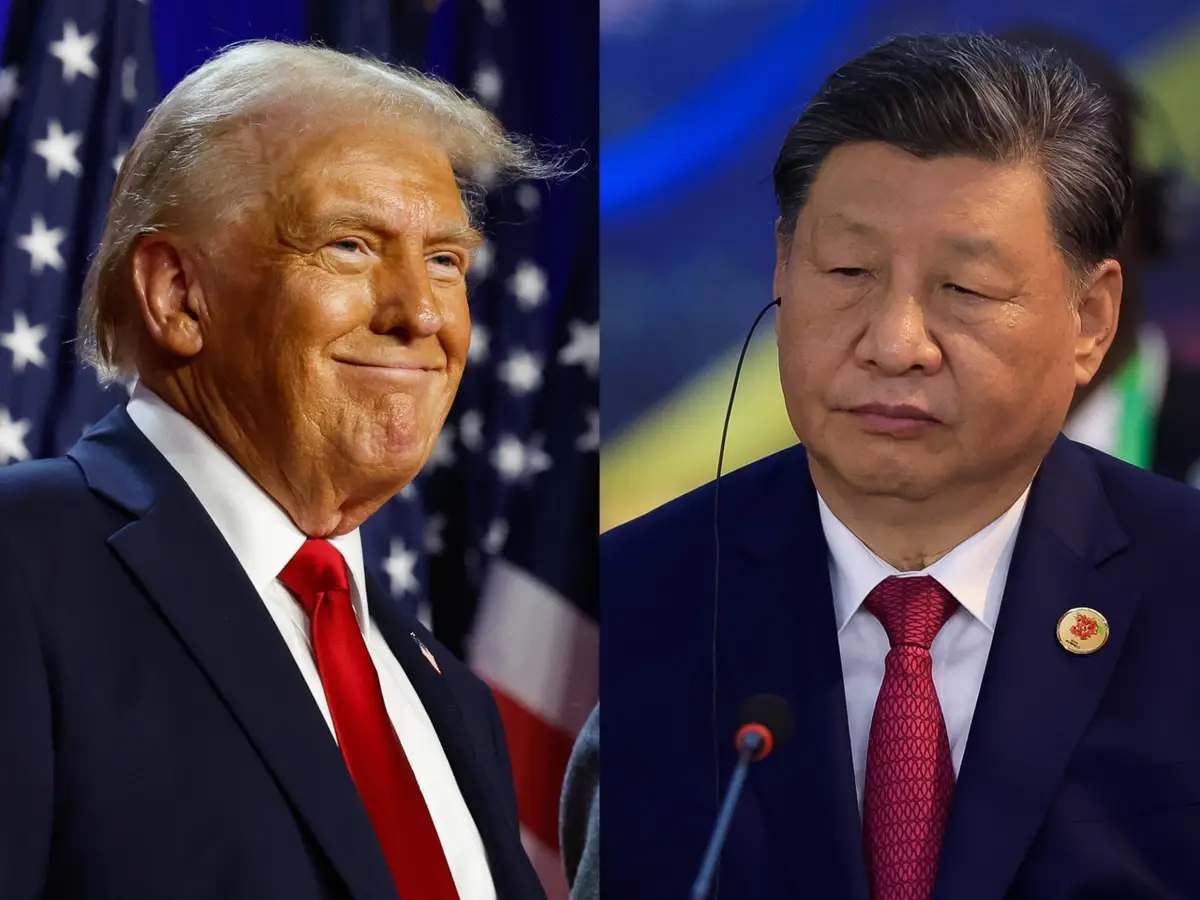US President Donald Trump is continuing to push for a trade deal with China, as tensions from the ongoing trade war remain high. Speaking during a recent Cabinet meeting, Trump made it clear that he “would love to get a deal with China,” signaling his willingness to resolve the trade conflict. This article explores the latest developments in US-China trade relations, Trump’s strategic plans, and the potential impact of these discussions on global trade.
Trump’s Push for a US-China Trade Deal: On Thursday, US President Donald Trump reaffirmed his desire for a trade agreement with China, despite the ongoing trade war. In a statement during an open Cabinet meeting, Trump expressed optimism about the possibility of a mutually beneficial deal for both countries. He remarked, “I think we will end up working out something good for both countries,” demonstrating his confidence in resolving the trade dispute.
This comes at a time when both the US and China have engaged in multiple rounds of negotiations, with little progress in finding common ground. The trade war, which began under Trump’s administration, has had significant economic repercussions for both nations. The president’s latest comments, however, offer hope for a resolution.
Tariff Revenue to Reduce National Debt: In his remarks, Trump suggested that the revenue generated from tariffs could be used to address the US’s national debt. By redirecting funds from tariffs, he aims to alleviate the financial burden on the country. “I would use money from tariffs to pay down debt,” Trump stated, signaling his belief that tariffs are not only a tool for trade negotiations but also a means of strengthening the US economy.
The notion of using tariffs as a source of revenue for reducing debt is part of Trump’s broader strategy to reshape international trade and improve America’s financial standing.
US Trade Strategy with the European Union: Trump also mentioned that he was considering approaching the European Union (EU) as a unified bloc for future tariff negotiations. “Looking at EU as one block on tariffs,” he noted, hinting at a strategic shift in how the US interacts with the EU on trade matters. This could pave the way for more cohesive and unified discussions on tariffs, ensuring that the US secures favorable terms in its dealings with European nations.
Progress in the Russia-Ukraine Conflict: Alongside trade discussions, Trump touched on the ongoing Russia-Ukraine conflict, claiming that progress was being made toward resolving the war. “We’re making progress on getting the Russia-Ukraine war stopped,” he said, further emphasizing his role in international diplomacy and global stability.
The Impact of Tariffs and Trade Deals on the US Economy: Trump’s stance on tariffs has been a central theme throughout his presidency. He believes that imposing higher tariffs on foreign goods will incentivize companies to set up operations in the US, thereby boosting the domestic economy and creating jobs. While tariffs have created tension with several countries, including China, Trump’s administration maintains that these policies will ultimately benefit the US economy in the long term.
The president’s remarks also suggested that if trade deals are not made within the next 90 days, higher tariffs could be reinstated. This warning has placed pressure on global trade partners to negotiate quickly and fairly.
What’s Next for US-China Relations? As Trump continues to push for a trade deal with China, the focus will remain on finding a resolution that addresses the concerns of both nations. While the trade war has resulted in economic hardship for many industries, Trump remains optimistic that a comprehensive deal will bring stability to US-China relations.
Trade deals with China and other nations are central to Trump’s economic strategy, and the outcome of these negotiations could have significant implications for global markets. The president’s comments on tariffs and revenue generation reflect his broader vision of restructuring global trade to benefit the US.
Conclusion: President Donald Trump’s push for a trade deal with China remains a critical aspect of his administration’s foreign policy. With ongoing trade tensions, his focus on using tariffs to reduce national debt and strengthen the US economy is a key component of his strategy. As the US seeks resolution on trade disputes with China and the European Union, the coming months will be crucial in determining the future of international trade relationships. Trump’s remarks signal that while challenges remain, there is optimism for a favorable outcome for the US.




